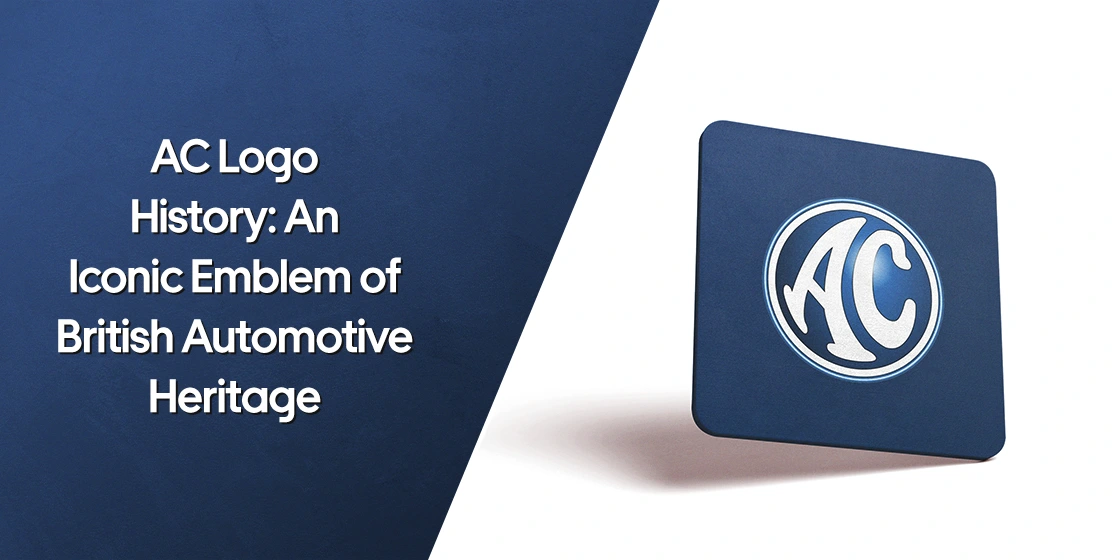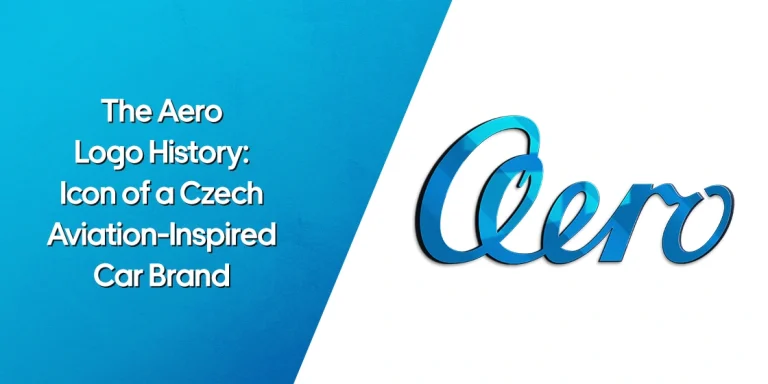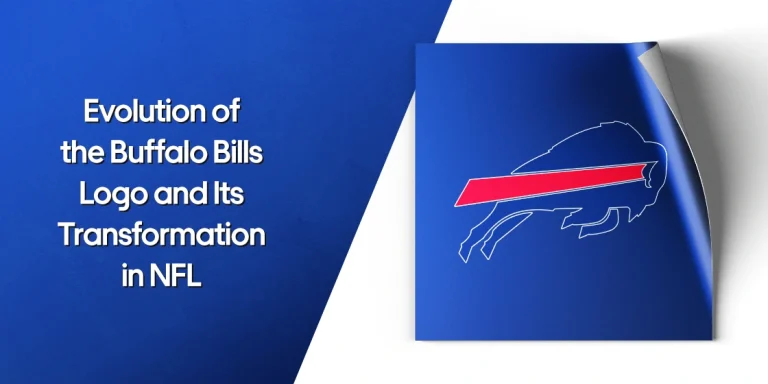
Table of Content
Discover How the AC Logo Has Transformed Into a Certified British Automotive Icon
The AC logo stands as one of the most recognizable symbols in British automotive history, representing over 124 years of engineering excellence and sporting achievement. Since its introduction in 1911, the distinctive roundel design has graced the bonnets of legendary sports cars, from the original AC Ace to the world-famous AC Cobra that dominated racing circuits in the 1960s.
What makes the AC logo particularly fascinating is its remarkable consistency throughout more than a century of automotive evolution. While many car manufacturers have completely redesigned their brand identities multiple times, AC Cars has maintained the essential character of its circular badge with only subtle refinements, making it a testament to timeless design principles and brand heritage.
Let’s take a look at its transformation through the perceptive lens of a professional logo design agency, and see how to replicate such iconic vibes into our own designs.
The Origins and Early History of the AC Logo
The AC logo has undergone several color transformations throughout its history, each reflecting the aesthetic preferences and marketing strategies of different eras. The original AC badge was created in 1907 and featured a circular frame with two “AC” letters enclosed in it, with both frame and lettering executed in black and boasting a thick white outline.
The AC logo’s story begins with the transformation of Auto Carriers Ltd in 1911, when the company moved to Ferry Works in Thames Ditton, Surrey. This pivotal moment marked the first official use of the famed “AC” roundel logo, establishing a visual identity that would become synonymous with British automotive craftsmanship.
The original design emerged from practical necessity rather than elaborate marketing strategy. In 1907, the abbreviation “AC” was used for the first time when the company became Autocarriers Ltd, following the success of their three-wheeled delivery vehicles. The circular badge design reflected the Art Nouveau aesthetic popular during the Edwardian era, featuring flowing, curved lettering that conveyed both elegance and forward motion. And it resulted in one of the more iconic British car brand logos of all time.
AC Logo 1907-1911

The choice of a circular format proved prescient, as roundel logos became increasingly popular in the automotive industry for their visibility and symbolic representation of wheels in motion. The AC logo’s distinctive curved lettering within the circular frame created an immediately recognizable brand mark that could be easily reproduced across various applications, from radiator badges to promotional materials.
AC Logo 1911-1996

The most significant color change occurred in 1911 when the company refined its visual identity. The redesign cleaned and modernized the contours of the AC logo and switched the color palette, making it sleek and unique, with a solid white color background while the initials and the border were a deep blue color. This blue and white combination became the standard configuration for many decades.
AC Logo 1954-1963

In 1954, AC introduced a striking variation that reflected the company’s growing confidence and international ambitions. The circular emblem became bright green, while the letters turned white and the framing became thin and triple, with two white lines and a green one between them. During this period, AC also experimented with additional elements, including a banner underneath the main logo featuring “Bristol” lettering to acknowledge their engine partnership.
AC Logo 1996-2022

The AC logo redesign in 1996 showcases several distinctive design elements that have remained consistent throughout its evolution, albeit modernized for the present automotive scene. The smoothness of the lines and playfulness of the letters’ tails is what makes the AC emblem recognizable and memorable, with the stylized lettering creating a sense of movement and dynamism appropriate for a sports car manufacturer. However, the color scheme was changed from the iconic green to a striking blue and white one, making for a great new look for one of the most iconic circular car logos.
AC Logo 2022-Today

The 2022 redesign of the AC logo resulted in the logo turning from its iconic metal and glaze design to the modern flat logo design. The letters are executed in a custom rounded typeface, which was designed based on the original logo version of the brand.
The proportions and spacing within the circular frame demonstrate careful consideration of visual balance. The “A” and “C” letters are sized to fill the available space effectively while maintaining readability at various scales, from hood ornaments to business cards. The curved baseline of the letters echoes the circular boundary, creating harmony between the letterforms and their container.
The Logo’s Role in AC’s Brand Identity
The AC logo serves as more than decorative element; it functions as a crucial component of the company’s brand storytelling and market positioning. The logo, typically featuring stylized letters “AC” within a simple yet elegant badge, embodies the brand’s commitment to quality and its British roots, connecting modern customers with over a century of automotive heritage.
The consistency of the logo design has provided AC with significant brand equity advantages. Unlike many automotive manufacturers who have undergone radical visual rebranding, AC’s commitment to its original roundel design has created strong brand recognition among collectors and enthusiasts. This visual continuity reinforces the company’s positioning as a traditional British sports car manufacturer with deep historical roots.
The logo’s application across different vehicle models has helped maintain brand coherence despite AC’s varied product lineup over the decades. Whether appearing on the utilitarian three-wheelers of the early 1900s or the high-performance Cobra models of the 1960s, the AC logo provided a unifying visual element that communicated quality and craftsmanship regardless of the specific vehicle type.
Collecting and Authenticity
The AC logo has developed a significant following among automotive collectors, with original badges commanding premium prices in classic car logos and badges, based on rarity and condition. Very rare badges that are not often seen command high prices if you can find one, with eBay being probably the best source, though there are many copies and originals are few and far between.
Determining authenticity requires careful examination of construction details, materials, and manufacturing marks. Original AC badges typically feature superior build quality with precise tolerances, high-quality enamel finishes, and specific mounting hardware. The weight and feel of authentic badges often differs noticeably from reproductions, as original examples used higher-grade materials and more robust construction methods.
Period-correct badges for specific AC models have become particularly valuable, especially those from the Cobra era or rare variants like the AC Bristol models. Collectors often seek complete sets of badges for restoration projects, including front and rear emblems, steering wheel centers, and accessory items like keychains and promotional materials featuring the AC logo.
Modern Usage and Brand Revival
The contemporary application of the AC logo reflects the company’s ongoing efforts to balance heritage preservation with modern marketing requirements. AC Cars was established in 1901, and is the UK’s oldest active vehicle manufacturer, combining rich heritage with cutting-edge innovation, positioning that requires careful logo management to appeal to both traditionalists and new customers.
Current AC logo applications include digital media, where the traditional circular design translates effectively to website headers, social media profiles, and online marketing materials. The logo’s simple geometry and clear contrast make it particularly suitable for digital reproduction, maintaining legibility across various screen sizes and resolutions.
The company has also adapted the logo for modern automotive applications, including LED lighting integration and contemporary badge mounting systems. These updates preserve the essential visual character while accommodating new technologies and manufacturing methods, ensuring that the AC logo remains relevant for future vehicle generations.
Influence on Automotive Logo Design
The AC logo’s longevity and effectiveness have influenced automotive logo design principles throughout the industry. Its circular format, typographic integration, and consistent application demonstrate successful brand identity management over extended periods. Many contemporary automotive brands study the AC approach when developing their own visual identities.
The logo’s balance between simplicity and distinctiveness provides a model for effective automotive branding. The custom lettering ensures uniqueness while the circular boundary provides structure and memorability. This combination has proven effective across various market conditions and consumer preferences over more than a century of operation.
The AC logo also demonstrates the value of restraint in logo evolution. Rather than following fashion trends or completely reinventing their visual identity, AC has maintained consistency while making subtle refinements. This approach has preserved brand equity and customer recognition while allowing for gradual modernization, especially with the return of the iconic AC Cobra today.
Frequently Asked Questions
| When was the AC logo first introduced? The AC logo was first introduced in 1911 when the company became Auto Carriers Ltd and moved to Ferry Works in Thames Ditton, Surrey. However, the “AC” abbreviation first appeared in 1907, with the circular roundel design being refined and formalized in 1911. |
| What do the letters “AC” in the logo stand for? The letters “AC” stand for “Auto Carriers,” which was the company name adopted in 1911. The company was originally founded as Weller Brothers in 1901, then became Autocars and Accessories in 1904, before settling on Auto Carriers Ltd, which was eventually shortened to AC Cars Ltd. |
| How has the AC logo design changed over the years? While maintaining its essential circular format and custom lettering, the AC logo has undergone several color variations. It started with black lettering on white background (1907), changed to blue letters on white background (1911), featured bright green with white lettering (1954), and returned to blue and white in later years. The basic roundel shape and typography have remained remarkably consistent. |
| Are original AC logo badges valuable to collectors? Yes, original AC logo badges are highly sought after by collectors and can command significant prices, particularly rare examples from the 1950s-1960s era. Authentic badges from J Fray Ltd, Birmingham, are especially valuable, with individual badges selling for £20-£69 and complete front emblems from AC 2 Litre models reaching £60-£200 depending on condition and rarity. |
| What makes the AC logo typography unique? The AC logo features custom hand-drawn lettering with no commercial equivalents. The letters are executed in a rounded typeface with smooth, curved lines and distinctive “tails” that create a sense of movement and playfulness. This bespoke typography ensures the logo cannot be easily replicated and maintains its unique character across applications. |
Conclusion
The AC logo represents far more than corporate identification; it embodies over a century of British automotive innovation, craftsmanship, and sporting achievement. From its origins in 1911 through its modern applications, the distinctive roundel design has maintained its essential character while adapting to changing times and technologies.
The logo’s enduring appeal demonstrates the power of consistent brand management and thoughtful design evolution. By preserving the core elements that make the AC logo recognizable while allowing for subtle refinements, the company has built substantial brand equity that continues to serve both commercial and cultural purposes.
For automotive enthusiasts, collectors, and design professionals, the AC logo offers valuable lessons in brand development, visual identity management, and the relationship between heritage and innovation. As AC Cars continues into its second century of operation, this iconic emblem remains a powerful symbol connecting past achievements with future aspirations in the continuing story of British automotive excellence.

Logopoppin
Logopoppin is a graphic design agency that specializes in logo designing, web development, video production and advanced branding services. We love to innovate businesses with new age technologies, allowing them to improve their visual reputation.



